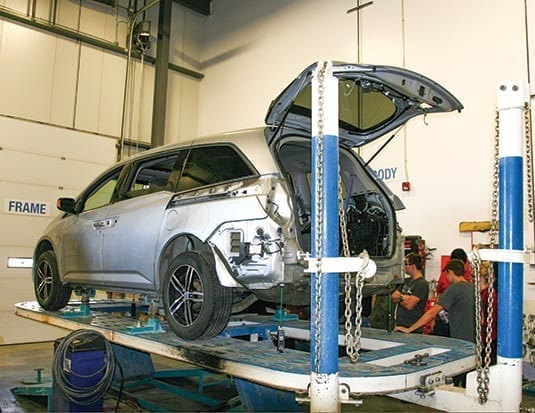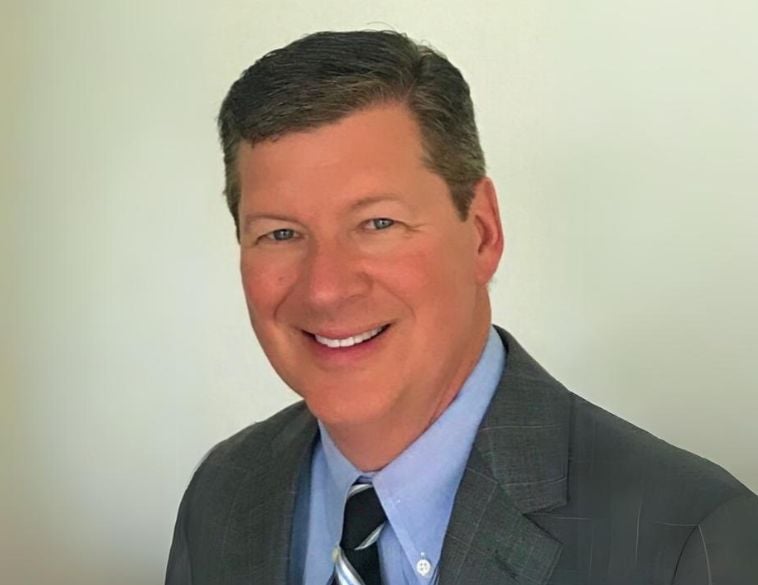Having access to the right tools and information pays dividends when it comes to OEM standard repair procedures.
Just as today’s automotive service technician is far more highly trained than just a generation ago, the collision repair shop is also a much more sophisticated operation.
The advent of onboard electronics, integrated crash protection technologies, and other components require precision repair techniques. In addition, advanced materials such as aluminum, high-strength and ultrahigh- strength steel, magnesium, and carbon fibre have all but revolutionized the repair process.
Working with these materials to a professional standard requires considerable investment in equipment and training; there are no quick fixes. Despite the cost of investing in the required tools and training, over the next few years, most collision shops will face a do or die imperative—professional quality repairs via visual verification simply aren’t acceptable any more.
Shop audit
“It starts with the audit of the shop; what do they have now, and what direction does the shop wants to take?” says Russell Duncan, Equipment Specialist, Color Compass Corporation.
“Some shops will invest in equipment to make their business saleable because without this technology they have nothing to sell. An owner might say, ‘Well, I only have five or 10 more years,’ but if they don’t have a properly equipped, viable business, why would someone buy it? It is an investment in the future of their business, and also an investment in retaining technicians today.”
Duncan also notes that technicians require the proper tools to effect the repair, and they also have future concerns that when they repair a vehicle, it has to be accident ready. “Without some of the modern tools you can’t effect that repair,” says Duncan.
“Depending on the type of shop you operate—whether it’s a banner shop or a specialty high-end shop— your equipment needs will be different, but either shop still needs the proper tools to do the job correctly,” agrees Vince Filice, President, Filco.
“What’s happening now is a lot of shops are in a panic mode, and they are buying whatever the sales rep or other shops are recommending to them. Most manufacturers now have requirements for specifications rather than for particular brands of equipment. For example, Honda, Mercedes, or BMW will ask you to have a welder of a certain amperage or certain force that is recommended by them to repair the vehicles, rather than recommending a brand of equipment,” explains Filice.
Equipment recommendations
Anouar Bélganche, Regional Sales Manager, Norton St-Gobain, notes that modern welding apparatus tends to work extremely well. “Today’s machines are faster and bring everything back to spec in no time. Paint finishes available today are extremely efficient with new clear and base colours for modern waterborne paint.” Bélganche also notes that paint guns are spraying more efficiently, using less material. “They are optimizing the flow and air pressure better,” he adds.
“It’s really a case of education and choosing something that will fit with what you are repairing. Even a MIG/ MAG welding machine is something you need to choose carefully,” explains Eric Léveillé, Vice-President, Paint and Body Equipment, UAP. “Because of the different types of aluminum, and the different types of alloys, it has become very specialized. Every manufacturer has different requirements and specific recommendations, and that’s where shops run into difficulties,” continues Léveillé. He notes that when dealing with carbon fibre, for example, you can ruin vehicle bodywork simply by using the wrong setting on a welder. “It will burn the carbon fibre and ruin the car,” says Léveillé. “You have a $60,000 vehicle, and it is now totaled. It’s that specific. You have to be careful.” When it comes to Benches with 3D measuring, many shops are looking for information and mobility.
“I was at the SEMA Show last month with several shop owners, and the main thing they were looking for was a 3D measuring system that was on the bench. But they also wanted a system that is mobile, so they can carry it from the estimating bay to a different space and do some measuring there as well. So, mobility is a factor in a 3D measurement system today,” adds Léveillé.
Training is key
Russell Duncan notes that proper tools are needed to measure the vehicle, to diagnose the electronics on it and to assemble the vehicle, from either a welding perspective, a gluing perspective or riveting. “There are so many techniques used today; the repair process should be attached to the work order,” says Duncan. “The technician should have a physical reference such as access to a shop tablet, a computer workstation, or some paper attached to a clipboard that walks them through the repair.”
Additionally, there are so many different sealers and structural foams, technicians have to use the correct foam and sealer for the application as recommended by the manufacturer. The same applies for the fastening or joining method. “There can be so many different alloys within one model that even the two-door and four-door options can be different,” warns Duncan. “Following Standard Operating Procedures (SOPs) and OEM recommended repair procedures is key,” says Phil Brown, Application Development Specialist for 3M Canada’s Automotive Aftermarket Division. 3M has a full list of standard operating procedures that are intended to provide every technician in the shop with the correct and most efficient steps to follow in many common repair processes. These steps help to maximize efficiencies in each stage in the collision repair process. “Shops that are still following the old methods of repair will have to sit down and plan where they want to be and how they are going to get there,” advises Art Ewing, Director of Sales and Marketing, Canada for Pro Spot International.
“When they acquire the appropriate equipment, shops will have to train their technicians. Training is such a key component, and it’s a continual learning process,” continues Ewing. “Information is out there and is easily accessible, and it has to be easily accessible to the techs. In a lot of shops that is where there is a disconnect.
Often, the technician is walking around the shop looking for the repair procedure. Half the time a manager or owner will have to go online and download the procedure for them, so they are left waiting. This step should be seamless today. Technicians should be able to readily access the information they need as immediately as anyone else. With smartphones and tablets, you should have immediate access to the information you need.”



